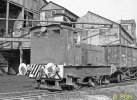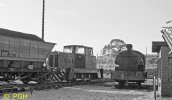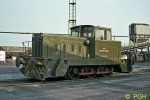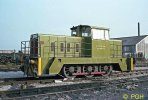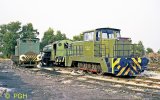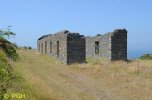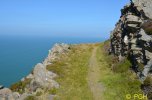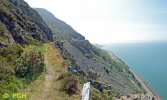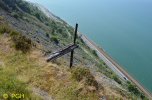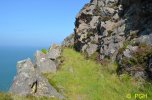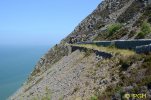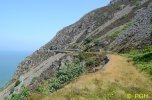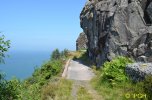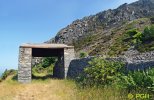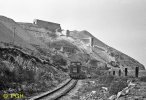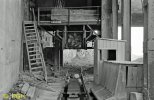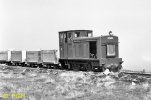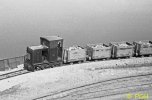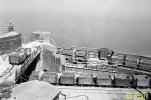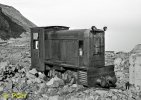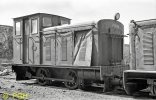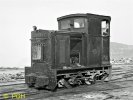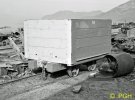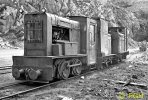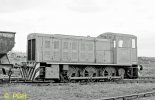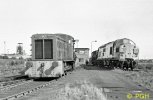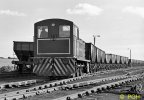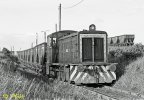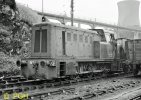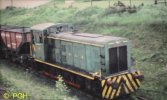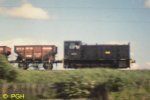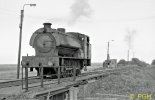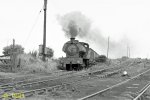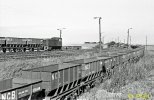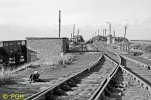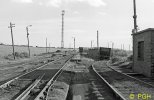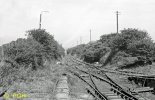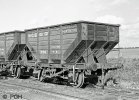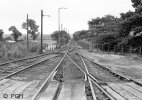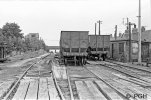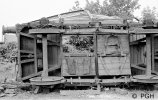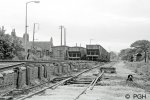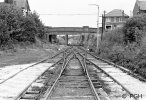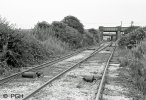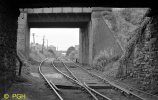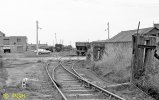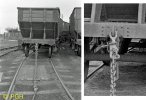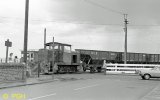One of the most spectacular but little known railway lines in the UK was round the Penmaenmawr Headland on the North Wales Coast, and I'm not referring to the North Wales Coast Line at the bottom of the headland but something rather higher up. This line was part of the 3ft gauge Penmaenmawr Quarry system, which connected the different quarry levels with the crushing mills, ship loading piers and main line railway sidings.
Quarrying at Penmaenmawr began in earnest early in the 19th Century. Before the building of the Chester to Holyhead Line in the 1840s most of the trading along the North Wales Coast had been by sea from ports on the Rivers Dee and Mersey. The boats were beached and the goods unloaded at low tide. For the return voyage the boats were ballasted with pebbles from the beach which were subsequently used in the cobbled streets in the towns of the North West. It was noted that the pebbles obtained from the beach at Penmaenmawr were particularly hard wearing, and when setts began to replace cobbles for road construction a merchant from Runcorn named Brundrit obtained a lease to open a sett quarry on the Penmaenmawr Headland in 1832. Brundrit's Quarry was actually in two sections, the Penmaen East Quarry on the Penmaenmawr Town side of the headland and the Penmaen West Quarry on the Llanfairfechan side, each with its own incline system connecting the quarry levels with shipping piers on the shore.
When the Chester & Holyhead Railway was constructed around the headland in 1845-8 the quarry incline system on the east side was carried over it on a bridge. However on the west, Llanfairfechan, side the Chester & Holyhead was constructed on a high sea wall at the base of the mountain which required removal of the existing West Quarry pier. To replace it a line was built around the headland approximately at the 500 foot contour to enable stone from the West Quarry to be transported to the pier on the east side.
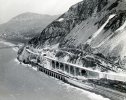
Aerial Photo of Penmaenmawr Headland taken in the early 1930s. From sea level, first is the Chester & Holyhead Line emerging from the tunnel to cross the Pen-y-Clip Viaduct; above is the new 7 arch A55 viaduct still under construction, it was officially opened on 5th October 1935; above that is the road built by John Sylvester for the Caernarvonshire Turnpike Trust opened in 1774 and improved by Thomas Telford in 1830; part of this at Pen-y-Clip was replaced at a higher level by 1860 and this road was still in use for traffic at the time of the photograph; well above and near the top of the photo is the quarry railway line. In the left distance is the Penmaen East Quarry Pier and beyond the houses of Penmaenmawr.
The line was originally worked by horses, but in the 1870s a mysterious vertical boilered loco MONA, about which little is known, was acquired to work the line. Apparently MONA proved to be a failure and was traded in to DeWinton for their new loco PENMAEN built in 1878, which then worked the line. The remains of PENMAEN are still at the quarry, two inclines up from this line.
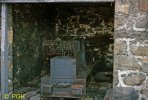
PENMAEN as it was in 1963, abandoned in the loco shed at Bottom Bank Penmaen East Quarry for about 30 years. At that date it was more or less intact, but the smoke vent in the shed roof had disappeared and water draining through the hole had rusted away the chimney and top of the boiler. It would have been a good candidate for preservation but its location made it impossible to remove intact. It was later dragged outside and stripped so that only the bare chassis, wheels and boiler shell now remain. Two further DeWintons were acquired later by Brundrits - PUFFIN, similar to PENMAEN, in 1893 and the larger LLANFAIR in 1895. The latter loco has been preserved and is (or was recently) on display at Dinas Station on the Welsh Highland Railway.
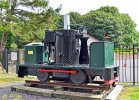
LLANFAIR on display at Dinas Station in 2016. Its likely that the larger LLANFAIR took over from PENMAEN on the West Quarry line prompting the transfer of the latter loco to the higher level.
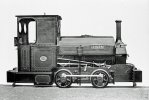
In 1902 Hunslet supplied a new loco to work the line as shown in the works photograph. This was a unique inside cylinder 0-4-0ST named TIGER, built to a narrow width because of the limited clearances on some parts of the line, its maximum width being only 4'‑6", nearly one foot less than other Quarry Hunslets.
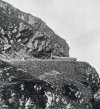
An illustration from a Brundrit & Co.Ltd. publicity brochure of 1905 shows TIGER with a train of 12 wagons from Penmaen West Quarry.
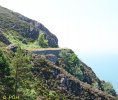
A view of the same location today. The parapet on top of the stone embankment has disappeared and there is more tree growth apparent. The view is slightly different because the photographer in 1905 must have been standing right on the edge of a rock outcrop with a considerable drop below - I wasn't prepared to go that near the edge !
In 1911 Brundrit's Penmaen Quarries were amalgamated with Darbishire's Graiglwyd Quarries, situated directly behind the town, and the Welsh Granite Co., which had quarries on the Lleyn Peninsula, to form the Penmaenmawr & Welsh Granite Co.Ltd. The two Penmaenmawr Quarry rail systems were connected by a line on the same level as the line round the headland. In the early 1930s the hand loading of stone at the quarry faces into 3ft. gauge wagons was replaced by mechanised loading into standard gauge wagons at the summit of the headland - the upper level of the Penmaen East Quarry - and most of the other quarry levels, including the Penmaen West Quarry and the line around the headland, were closed at about the same time. Subsequent quarrying has reduced the height of the headland by approximately 260 feet below its original summit.

